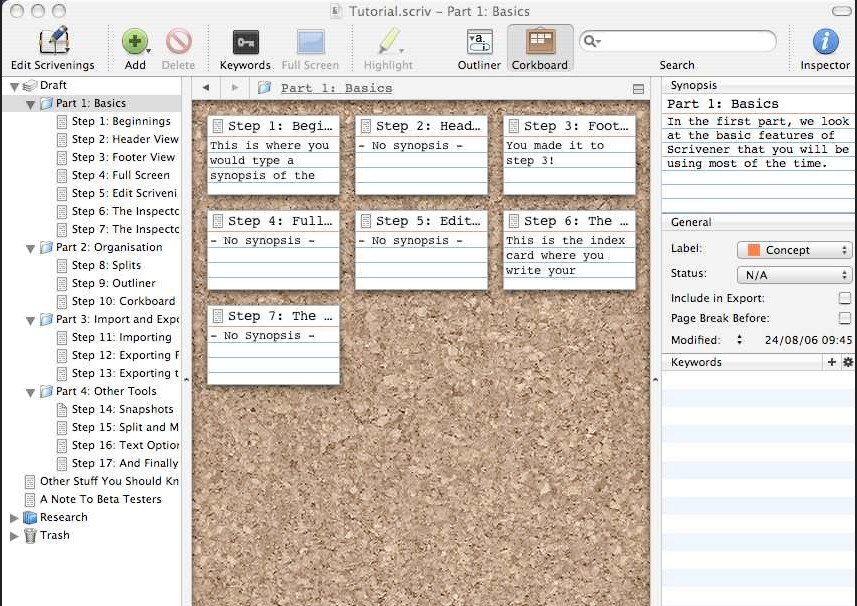

Several months on, with no rain in sight, mosquito-infested pools of water were the only visible sign of the lake filling. The valves on the Scrivener Dam were closed on 20 September 1963 by Interior Minister Gordon Freeth Prime Minister Menzies was absent due to ill health. Lights of the dam at night Lake filling Ī prolonged drought coincided with and eased work on the lake's construction. A minimum base flow of 0.03 m 3/s (1.1 cu ft/s) is required in the Molonglo River, downstream of Scrivener Dam at the gauging station below Coppins Crossing.
Scrivener cost manual#
With three sluice valves open, outflows of 55 m 3/s (1,900 cu ft/s) can be achieved through either automatic or manual operation of the dam. Flows of 2,000 m 3/s (71,000 cu ft/s) and above at the dam spillway are achieved with all five flap gates open and are able to maintain the normal level of the Lake at 555.93 metres (1,823.9 ft), measured at the East Basin. Scrivener Dam is operated in an environment that minimises flooding of the environs of Lake Burley Griffin. It was anticipated that work would be completed by the end of 2013, and cost A$20m.

These bolts, of which there are 120 in total, are each 50 millimetres (2.0 in) in diameter and 2 metres (6 ft 7 in) long.

Ī routine annual audit of the dam wall undertaken during 2011 revealed that the anchor bolts, which are part of the flap gate hinge mechanism, showed signs of corrosion. The Authority manages external contractors to deliver services that are competitively tendered. The National Capital Authority, a statutory authority of the Australian Government, is responsible for the administration and oversight of Scrivener Dam, as the dam lies within the Designated Area, under the Australian Capital Territory (Planning and Land Management) Act, 1988 (Cth). Dam maintenance įloating maintenance barrier for Scrivener Dam stored at Yarramundi Reach Lake Burley Griffin Canberra The roadway was possible because the dam gates are closed by pushing up from below, unlike most previous designs that wherein the gates were lifted from above. The dam wall provides a crossing for the lake and consists of a roadway, called Lady Denman Drive, and a bicycle path. As at November 2010, the five gates have only been opened simultaneously once in the dam's history, during heavy flooding in 1976. The fish-belly gates allow for a precise control of water level, reducing the dead area on the banks between high and low water levels. Hinge anchors support the flap gates with six hinges per gate, and four anchors per hinge. The dam has five bay spillways controlled by 30.5 metres (100 ft) wide, hydraulically operated fish-belly flap gates. It utilised state-of-the-art post-tensioning techniques to cope with any problems or movements in the riverbed. The dam is designed to handle a once in 5,000 year flood event. The dam is 33 metres (108 ft) high and 319 metres (1,047 ft) long with a maximum wall thickness of 19.7 metres (65 ft). About 55,000 cubic metres (1,900,000 cu ft) of concrete was used in the construction of the dam wall. Scrivener Dam, designed in Germany, holds back the waters of the Molonglo River within Lake Burley Griffin. Scrivener Dam with three open fish belly floodgates, 2010 The dam wall is located on Lady Denman Drive and is adjacent to the National Zoo & Aquarium and a viewing area for the official residence of the Governor-General of Australia.

Named in honour of surveyor Charles Scrivener, the dam was officially inaugurated on 20 September 1964 ( ) and the official filling of the lake commemorated on 17 October 1964 ( ) by the Prime Minister, Robert Menzies. The dam creates Lake Burley Griffin, which was established for recreational and ornamental purposes. Scrivener Dam is a concrete gravity dam that impounds the Molonglo River in Canberra, Australian Capital Territory.


 0 kommentar(er)
0 kommentar(er)
